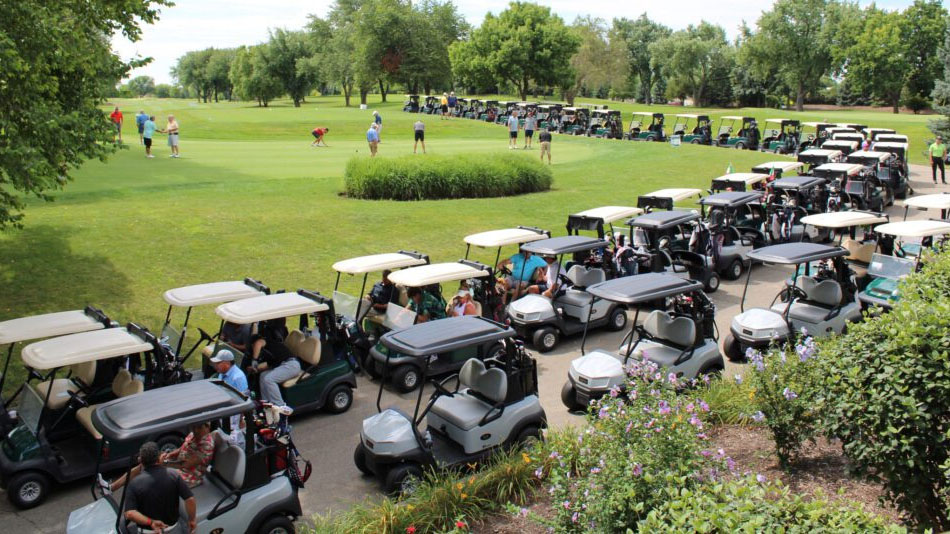Good news in the golf business has been as difficult to come by in recent years as equipment, parts and workers seeking a career in turf management.
There was plenty of good news emanating Jan. 26 from the Orange County Convention Center in Orlando where Jim Koppenhaver of Pellucid Corp. and Stuart Lindsay of Edge Hill Golf Advisors presented their annual state of the industry address during the PGA Merchandise Show.
Overall, the number of golfers is up, rounds played are down only slightly in what has been a horrible weather year, younger players are entering the game and revenue is up, according to Koppenhaver.
"I thought we'd lose all those golfers who came during Covid because they had nothing else to do," Koppenhaver said. "The great news is they're still here, and we're two years down the road."
Specifically, the number of golfers in the pipeline rose from 21.6 million to 21.9 million. That is the most since 2 million golfers played 451 million rounds in 2014. A total of 502.5 million rounds of golf were played last year. That figure is down from 518 million rounds in 2021. Although there was a drop in rounds played, Koppenhaver says he considers it a net gain considering the weather in 2022.
Of the new players picked up during Covid, many play infrequently at best and the industry overall has to do a better job at retaining them and getting them to play more.
The industry has been out of balance for many years, and I sat up here saying we need to lose 1,000 18-hole equivalents, and we won't do that in my lifetime. Then Covid came along and changed all that in two years.
"We have to get them up the involvement curve," Koppenhaver said. "At two rounds a year, it is easy to fall off that involvement curve."
The good news is 80 percent of new golfers entering the game are under age 45 and half are under 35, with the average age of a new golfer being 36. The biggest difference was in female golfers, who comprise about 26 percent of existing players, Lindsay said. The median age of female golfers is down from 48 in 2015 to 37.
Those aged 55 and older still play most of the rounds, with that group accounting for 54.6 percent of all rounds played.
Koppenhaver's Pellucid Corp. tracks weather's effects on golf through a measurement he calls golf playable hours. GPH is a function of factors such as sunlight, temperature, wind and precipitation and how they can affect the number of available hours to play golf.
The nationwide average of golf playable hours in 2022 was 1,932 hours. That number marks five consecutive years of GPH coming in below the 10-year average of 2,146 hours and is the first time in the two decades Koppenhaver has been tracking such data that it came in below the 2,000-hour threshold.
With such a grim weather outlook, Koppenhaver said he would not expect such a hike in the number of golfers. Likewise, he said he would expect demand to be down by much more than 17 million rounds played, leading him to conclude that virtually all losses were due entirely to weather.

"The story is not that we're down 3 percent. The story is we're 2 percent rounds up vs. weather," Koppenhaver said.
"When the weather cooperates and we have the right conditions, people are still coming out. Demand is very strong."
According to a study of 100 golf courses by Koppenhaver and Lindsay, revenue climbed 60 percent throughout the Covid era.
"That's unheard of," Koppenhaver said. "We have been realists in the industry for 20 years. I've never had the opportunity to sit in front of you and talk about 15 percent annual growth rates in revenue, and 60 percent (growth) in three years."
Every year since 2006, more golf courses have closed than opened, and 2022 was no different. The gap between new course construction and closings is narrowing because of the game's rise in popularity.
A total of 97 courses (18-hole equivalents) closed in 2022 and only 23 opened, while another 102 courses changed ownership.
I thought we'd lose all those golfers who came during Covid because they had nothing else to do. The great news is they're still here, and we're two years down the road.
Since 2006, 647 new courses have opened while 2,259 have closed for a net loss of 1,612.
In that time, Koppenhaver has been preaching supply/demand equilibrium based on 35,000 rounds per 18-hole equivalent.
Since the Covid onset, courses nationwide cumulatively have been operating above supply/demand equilibrium.
Courses nationwide have averaged 37,900 rounds played per 18-hole equivalent in 2020, 40,100 rounds in 2021 and 39,000 rounds in 2022.
"What this is saying, if you are true to the math, with 502 million rounds with 14,000 18-hole equivalents, we could support another 81 18-hole equivalents," Koppenhaver said. "Now, can you just drop 81 golf courses anywhere? No, that's what we did wrong the last time. We didn't put them in the right place and we didn't build the right type. Everyone wanted to build the three P's: penal, pristine and premium.
"We could start building more supply, but we need to pay attention to the right place and the right type of golfer. The industry has been out of balance for many years, and I sat up here saying we need to lose 1,000 18-hole equivalents, and we won't do that in my lifetime. Then Covid came along and changed all that in two years."

